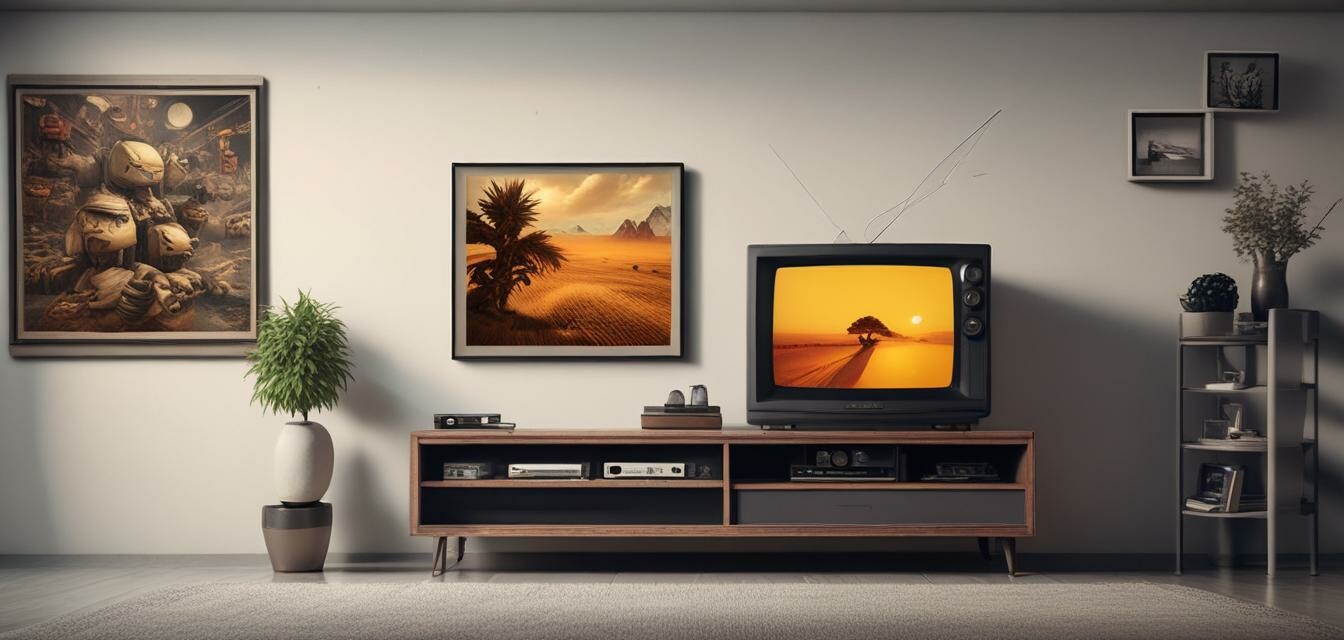
The Evolution of Gaming TVs: From CRT to Ultra HD
Over the years, gaming televisions have undergone a remarkable transformation, all while shaping the gaming experience. From bulky CRT televisions to the sleek, ultra-high-definition models of today, each advancement has contributed to the immersion of our favorite games. In this article, we will explore the key milestones in the evolution of gaming TVs, the technologies that have emerged, and the features that have become essential for gamers today.
Key Takeaways
- The shift from CRT to flat screen TVs marked a significant change in gaming experiences.
- Modern TVs now offer essential features such as Variable Refresh Rate (VRR) and low input lag.
- OLED and QLED technologies provide vibrant colors and deeper blacks, enhancing gameplay.
- Understanding these trends can help gamers choose the right TV for their setup.
1. The Era of CRT: The Birth of Gaming TVs
Before the digital age, Cathode Ray Tube (CRT) televisions reigned supreme. These bulky devices may seem outdated now, but they provided the foundation for home gaming. Let’s break down some key aspects of CRT gaming TVs:
| Attribute | Details |
|---|---|
| Screen Size | Typically between 13 to 36 inches. |
| Resolution | Standard Definition (480p). |
| Refresh Rate | 60Hz, but often had motion blur due to phosphor persistence. |
| Input Lag | Generally low, often less than 20ms. |
Limitations of CRT TVs
Despite their strong gaming capabilities, CRTs had notable limitations:
- Heavy and bulky
- Limited screen size options
- Not suitable for high-definition content
2. The Transition to Flat Panels: LCD and Plasma TVs
With the advent of LCD and plasma technologies, gaming televisions began to shift from the traditional bulky designs. This era started in the late 1990s and continued into the early 2000s. Here’s what flat-panel TVs brought to the gaming table:
| Attribute | Details |
|---|---|
| Screen Size | Ranged from 32 to 65 inches and beyond. |
| Resolution | 480p to 1080p (Full HD). |
| Refresh Rate | 60Hz to 120Hz for some models. |
| Input Lag | Varied between 20 to 30ms. |
Benefits of Flat Panel Technology
Flat-panel TVs changed the way we experience games:
- Lightweight and slim design
- Available in larger sizes
- Better color reproduction and brighter screens
3. The Rise of 4K and HDR Gaming TVs
As gaming technology advanced, so did the televisions. The introduction of 4K resolution and High Dynamic Range (HDR) features significantly enhanced the clarity and vibrancy of games.
| Attribute | Details |
|---|---|
| Screen Size | Commonly 55 inches and larger. |
| Resolution | 4K (3840 x 2160). |
| Refresh Rate | Upto 120Hz on select models. |
| Input Lag | Low options below 15ms. |
Noteworthy Features
The emergence of 4K and HDR gaming TVs brought forth a host of new features:
- Enhanced color accuracy with HDR technology
- Improved detail and sharpness due to 4K resolution
- Dynamic refresh rates for smoother gameplay
If you're curious about how to choose the right 4K gaming TV, check out our buying guide.
4. Current Trends: OLED & QLED Technology
Today’s most advanced TV technologies include Organic Light Emitting Diode (OLED) and Quantum Dot LED (QLED). These innovations have set new benchmarks for gaming TVs.
| Technology | Benefits |
|---|---|
| OLED | Infinite contrast ratio, vibrant colors, and ultra-thin design. |
| QLED | Bright display, excellent color volume, and longer lifespan. |
Important Specifications for Gamers
When selecting a TV for gaming, look for:
- 4K resolution for sharp visuals
- Variable Refresh Rate (VRR) to eliminate screen tearing
- Low input lag for responsive gameplay
Conclusion
The journey from CRT to ultra HD gaming TVs showcases the rapid technological progress that has revolutionized how we play. Gamers now enjoy expansive, vibrant visuals, making their experiences more immersive than ever before. As you consider upgrading or purchasing a new gaming TV, make sure to evaluate the key features essential for maximizing your gaming setup.
Tips for Choosing a Gaming TV
- Always check for low input lag for the best performance.
- Consider the size of your gaming space when selecting screen size.
- Look out for HDMI 2.1 ports for next-gen gaming compatibility.
Pros
- Wide range of features available to enhance gaming.
- Modern TV technologies produce stunning visuals.
- Increased availability of 4K and HDR content.
Cons
- Can be expensive compared to older models.
- Limited viewing angles on some screens.
- Some technology struggles with motion blur during fast-paced games.
